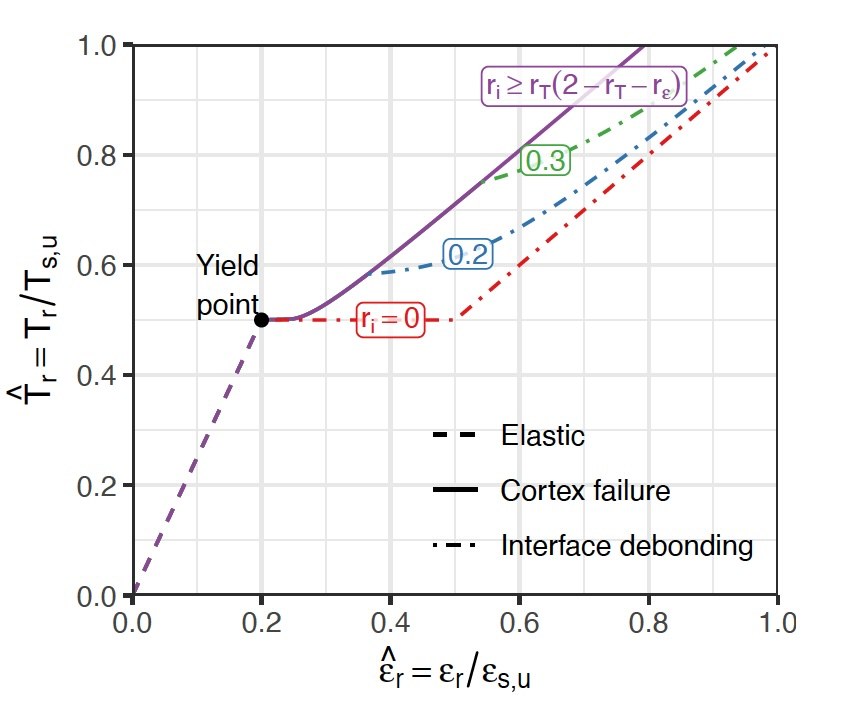
Root tensile strength is fully determined by the strength of the stele alone
Authors
Meijer GJ, JP Lynch, JG Chimungu, KW Loades
Source
Plant and Soil
Download Options
Abstract
Purpose: Quantifying the stability of individual plants or their contribution to soil reinforcement against erosion or landslides requires an understanding of the tensile properties of their roots. This work developed a new analytical model to understand the tensile stress–strain behaviour of a single root axis, which is the first to incorporating root anatomical features, in order to reduce the existing uncertainty in predictions.
Methods: The root was modelled as a linear elastic stele connected to a surrounding linear elastic cortex by means of a linear elastic stele–cortex interface. By solving for force equilibrium, an analytical solution for the full tensile stress–strain behaviour — including any intermediate brittle failures of the stele, cortex and/or interface — was obtained. This model was compared to tensile tests and laser ablation tomography for maize roots.
Results: The new modelling approach demonstrated that the root tensile strength is fully determined by the strength of the stele alone, which was an order of magnitude larger than that of the cortex while also 3–4 times stiffer. The reduction in root stiffness beyond the yield point was linked to continuing fracturing of the cortex and debonding along the stele–cortex interface. A larger proportion of the variation in experimentally measured biomechanical characteristics could be explained compared to root diameter power-law fitting methods typically applied in the literature.
Conclusion: Stele and cortex biomechanical properties are substantially different, affecting the tensile behaviour of plant roots. Accounting for these anatomical traits increased the accuracy of predicting root biomechanical properties from tensile tests.

